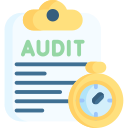What Compliance and Technology Audits Really Mean
Compliance is the promise you make; an audit is the proof you can show; a technology audit examines systems, data flows, and controls underpinning both. Clear, shared definitions help teams collaborate effectively and help customers trust what you build. Share how your organization defines these terms.
What Compliance and Technology Audits Really Mean
Great audits turn controls into confidence, helping close enterprise deals, reduce incident costs, and accelerate change with less fear. They also reveal risks earlier, guiding investments toward what truly matters. Subscribe to get weekly insights that go beyond compliance checklists.












